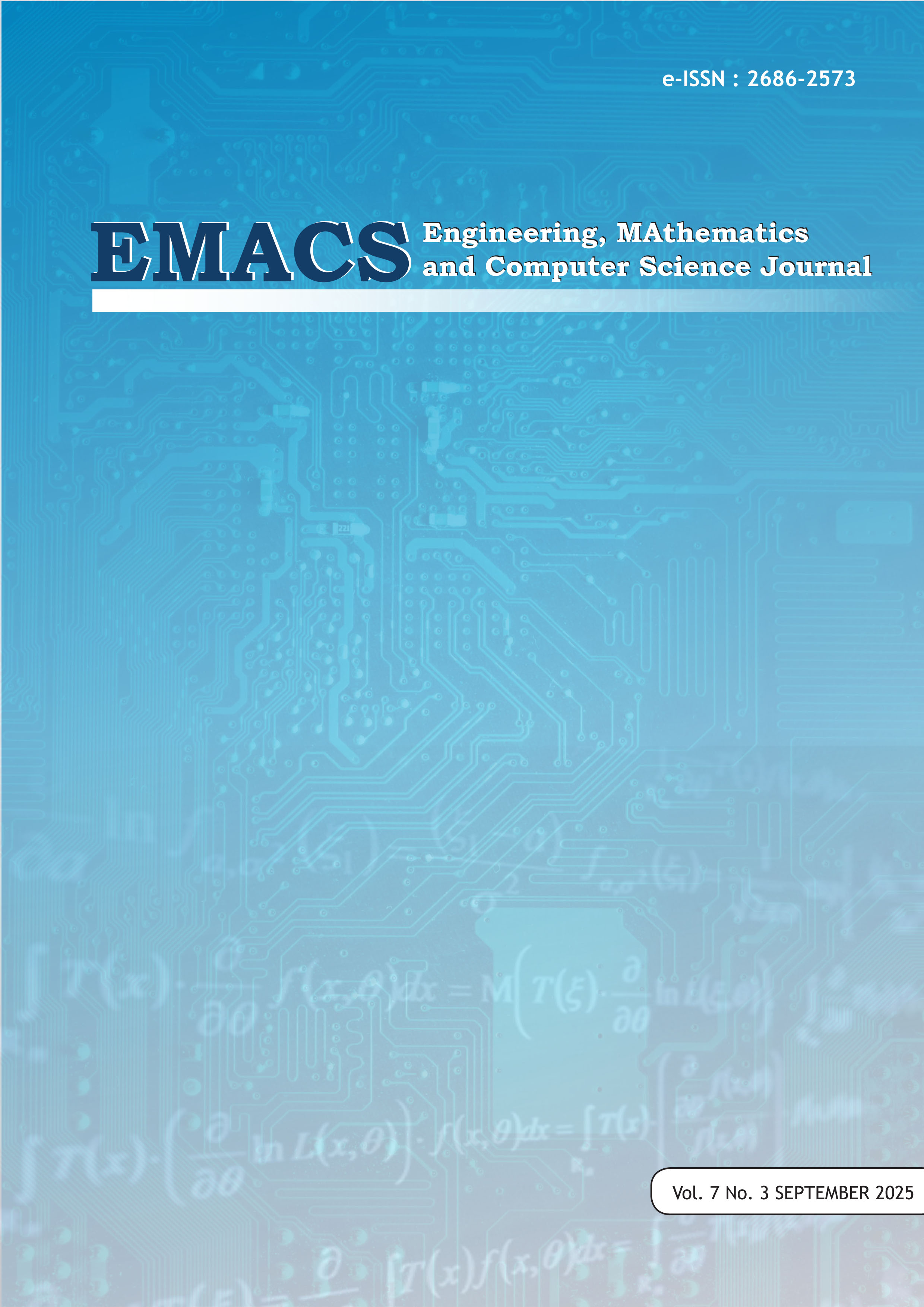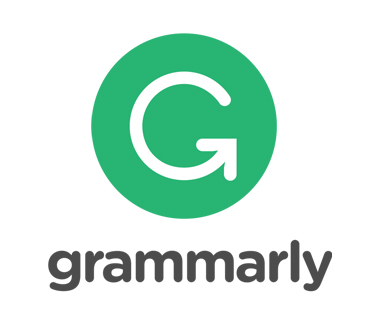Comparative Study of CNN-based Deep Learning Models for Animal, Digit, and Flower Image Classification
DOI:
https://doi.org/10.21512/emacsjournal.v7i3.14317Keywords:
Image, Classification, Deep learningAbstract
This study explores how four convolutional neural network (CNN) models MobileNetV2, DenseNet121, EfficientNetB0, and InceptionV3 perform in classifying images from three different datasets: animals, handwritten digits (MNIST), and flowers. The main goal is to understand which model offers the best balance between accuracy and efficiency when applied to datasets with varying complexity. Each model was trained and tested using identical preprocessing steps, and its performance was evaluated based on accuracy, precision, recall, and F1-score through a confusion matrix. Training and testing times were also measured to assess computational efficiency. The results show that DenseNet121 consistently achieved the highest accuracy: 98% on animal images and 88% on flower images, while MobileNetV2 provided a close performance (97% and 82%) but with much faster processing times, between 11 and 55 minutes. EfficientNetB0, on the other hand, performed poorly on the more complex flower dataset, achieving only 5% accuracy. These findings suggest that DenseNet121 is ideal for projects where accuracy is the main concern, whereas MobileNetV2 is more suitable for real-time applications that require quick responses without a major drop in accuracy. Overall, this research highlights the importance of aligning model selection with both dataset characteristics and computational limitations in practical image classification tasks.
References
Al-Saffar, A. A. M., Tao, H., & Talab, M. A. (2017). Review of deep convolution neural network in image classification. Proceedings of the 2017 International Conference on Radar, Antenna, Microwave, Electronics, and Telecommunications (ICRAMET), 26–31. https://doi.org/10.1109/ICRAMET.2017.8253139
Alshazly, H., Linse, C., Barth, E., & Martinetz, T. (2019). Handcrafted versus CNN features for ear recognition. Symmetry, 11(12), 1493. Retrieved April 21, 2024, from https://www.mdpi.com/2073-8994/11/12/1493
Alzubaidi, L., Zhang, J., Humaidi, A. J., Al-Dujaili, A., Duan, Y., Al-Shamma, O., Santamaría, J., Fadhel, M. A., Al-Amidie, M., & Farhan, L. (2021). Review of deep learning: Concepts, CNN architectures, challenges, applications, future directions. Journal of Big Data, 8(1), 1–74. https://doi.org/10.1186/s40537-021-00444-8
Basak, H., Kundu, R., Chakraborty, S., & Das, N. (2021). Cervical cytology classification using PCA and GWO enhanced deep features selection. SN Computer Science, 2(5). https://doi.org/10.1007/s42979-021-00741-2
Comber, A., Fisher, P., Brunsdon, C., & Khmag, A. (2012). Spatial analysis of remote sensing image classification accuracy. Remote Sensing of Environment, 127, 80–89. https://doi.org/10.1016/j.rse.2012.09.005
Dutta, S., Manideep, B., Rai, S., & Vijayarajan, V. (2017). A comparative study of deep learning models for medical image classification. IOP Conference Series: Materials Science and Engineering, 263(4), 042097. https://doi.org/10.1088/1757-899X/263/4/042097
Eli-Chukwu, N. C. (2019). Applications of artificial intelligence in agriculture: A review. Technology & Applied Science Research, 9(4), 4377–4383. Retrieved May 30, 2024, from www.etasr.com
Hatcher, W. G., & Yu, W. (2018). A survey of deep learning: Platforms, applications and emerging research trends. IEEE Access, 6, 24411–24432. https://doi.org/10.1109/ACCESS.2018.2830661
Hemdan, E. E.-D., Shouman, M. A., & Karar, M. E. (2020). COVIDX-Net: A framework of deep learning classifiers to diagnose COVID-19 in X-ray images. arXiv Preprint. Retrieved April 4, 2024, from http://arxiv.org/abs/2003.11055
Kamel, I. (2024). Artificial intelligence in medicine. Journal of Medical Artificial Intelligence, 7(0), 4. https://doi.org/10.21037/jmai-24-12
Khamparia, A., & Singh, K. M. (2019). A systematic review on deep learning architectures and applications. Expert Systems, 36(3), e12400. https://doi.org/10.1111/exsy.12400
Lian, D., Yu, Z., Sun, X., & Gao, S. (2021). AS-MLP: An Axial Shifted MLP Architecture for Vision. arXiv.
Loureiro, S. M. C., Guerreiro, J., & Tussyadiah, I. (2021). Artificial intelligence in business: State of the art and future research agenda. Journal of Business Research, 129, 911–926. https://doi.org/10.1016/j.jbusres.2020.11.001
Maqueda, A. I., Loquercio, A., Gallego, G., García, N., & Scaramuzza, D. (2018). Event-based vision meets deep learning on steering prediction for self-driving cars. Proceedings of the IEEE Conference on Computer Vision and Pattern Recognition (CVPR). Retrieved April 22, 2024, from http://openaccess.thecvf.com/content_cvpr_2018/html/Maqueda_Event-Based_Vision_Meets_CVPR_2018_paper.html
Obaid, K., Zeebaree, S., & Ahmed, O. M. (2020). Deep learning models based on image classification: A review. International Journal of Science and Business. Retrieved April 22, 2024, from https://www.academia.edu/download/64726148/612.pdf
Pommé, L., Bourqui, R., Giot, R., & Auber, D. (2022). Relative confusion matrix: Efficient comparison of decision models. Proceedings of the 2022 26th International Conference on Information Visualisation (IV). https://doi.org/10.1109/IV56949.2022.0002
Tan, M., & Le, Q. V. (2021). EfficientNetV2: Smaller Models and Faster Training. In Proceedings of the 38th International Conference on Machine Learning (ICML 2021). arXiv
Tolstikhin, I., Houlsby, N., Kolesnikov, A., Beyer, L., Zhai, X., Unterthiner, T., … Uszkoreit, J. (2021). MLP-Mixer: An all-MLP Architecture for Vision. arXiv.
Zhao, Y., Wang, G., Tang, C., Luo, C., Zeng, W., & Zha, Z.-J. (2021). A Battle of Network Structures: An Empirical Study of CNN, Transformer, and MLP. arXiv.
Downloads
Published
How to Cite
Issue
Section
License
Copyright (c) 2025 Puti Andam Suri, Michael Alvin Setiono, Andrew Andrew, Muhammad Fajar

This work is licensed under a Creative Commons Attribution-ShareAlike 4.0 International License.
Authors who publish with this journal agree to the following terms:
- Authors retain copyright and grant the journal right of first publication with the work simultaneously licensed under a Creative Commons Attribution License - Share Alike that allows others to share the work with an acknowledgment of the work's authorship and initial publication in this journal.
- Authors are able to enter into separate, additional contractual arrangements for the non-exclusive distribution of the journal's published version of the work (e.g., post it to an institutional repository or publish it in a book), with an acknowledgment of its initial publication in this journal.
- Authors are permitted and encouraged to post their work online (e.g., in institutional repositories or on their website) prior to and during the submission process, as it can lead to productive exchanges, as well as earlier and greater citation of published work.
USER RIGHTS
All articles published Open Access will be immediately and permanently free for everyone to read and download. We are continuously working with our author communities to select the best choice of license options, currently being defined for this journal as follows: Creative Commons Attribution-Share Alike (CC BY-SA)





